The device is held in (or strapped to) the palm of either hand, with the joystick positioned beneath the thumb and the buttons and a scroll-wheel under the fingers. The device should be mirrored down the middle so that it can be held comfortably in either hand.
All the buttons, scroll-wheel and joystick axis movements should be able to be arbitrarily remapped (and remapped to be left-handed). The cursor move rate can be configured to be proportional to the axis offset from centre.
Programmable ambidextrous joystick mouse
A flexible and accessible pointing device

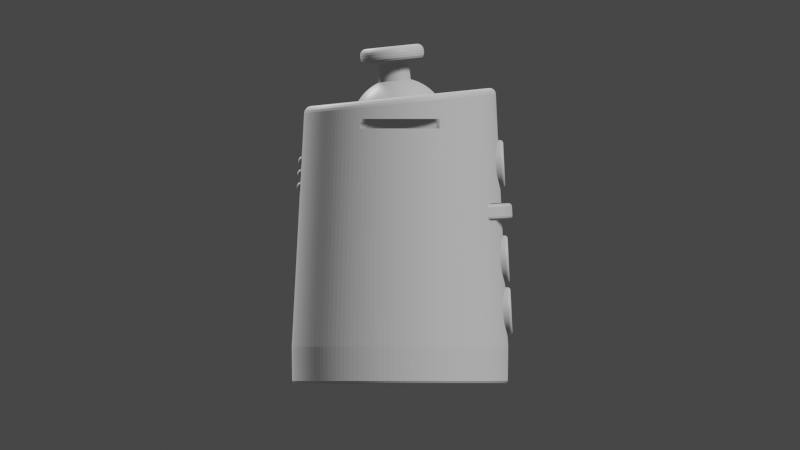
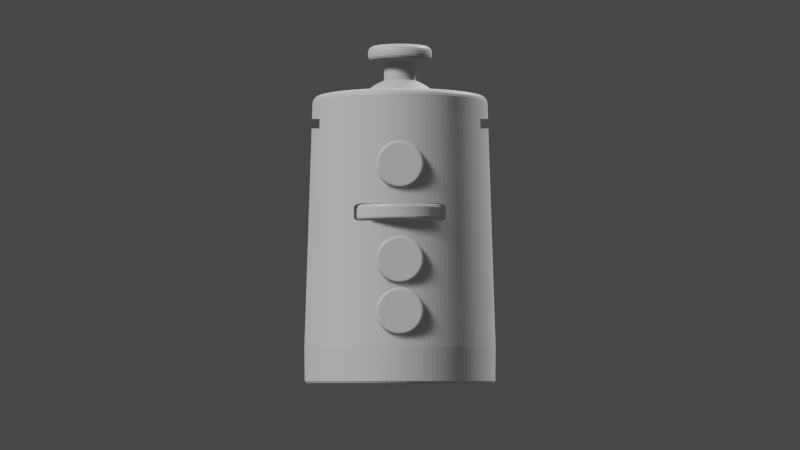

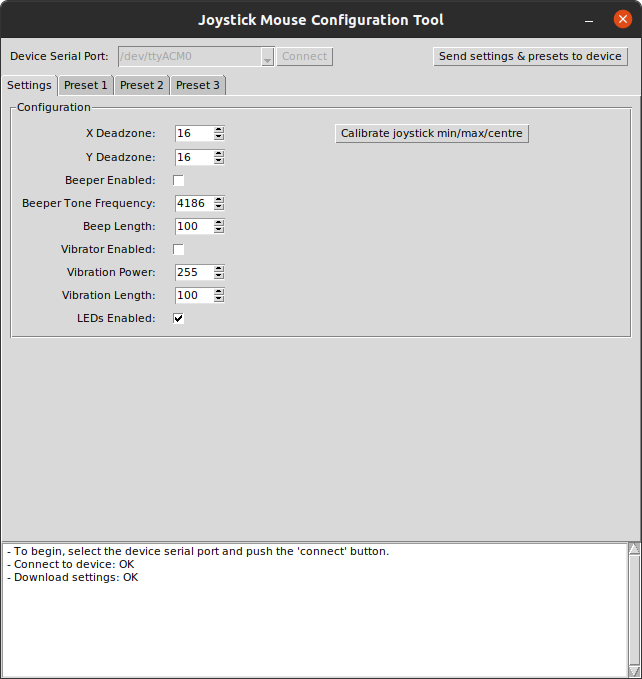
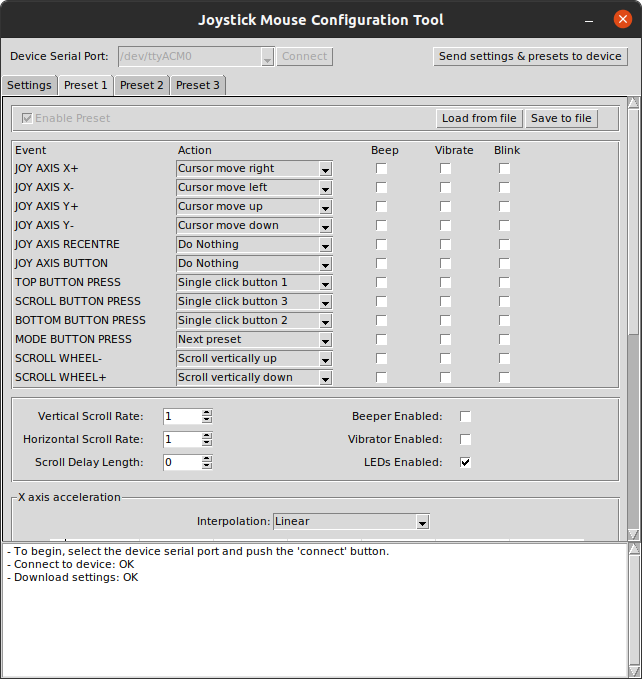
 But you can have more abrupt movements if you prefer, or smoothed out movements.
But you can have more abrupt movements if you prefer, or smoothed out movements.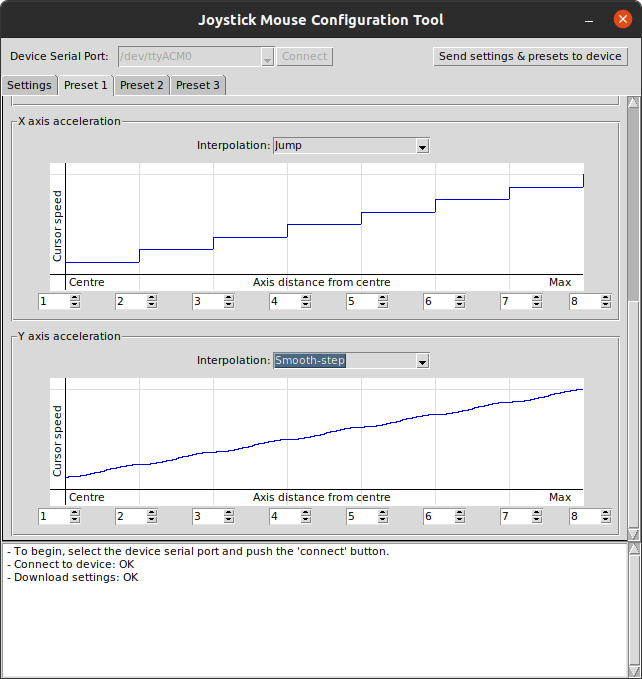 These speed settings are just for demonstration, I don't recommend using them.
These speed settings are just for demonstration, I don't recommend using them.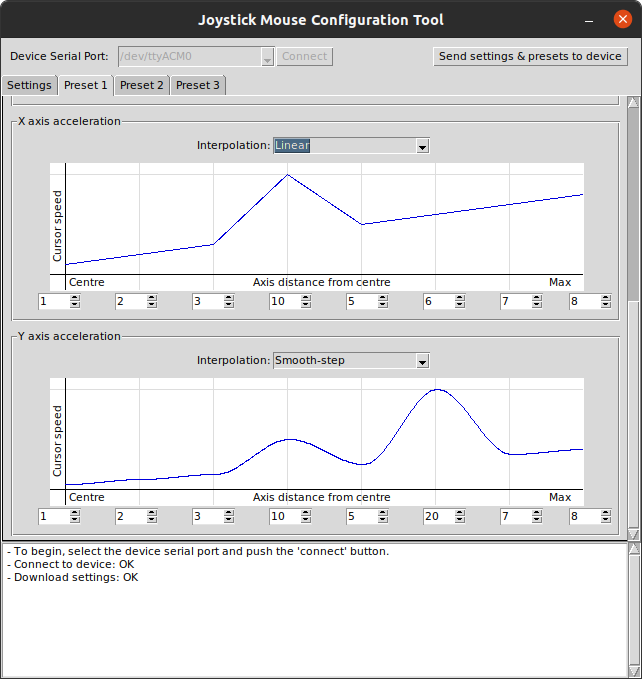 Using Python and Tkinter make running the tool across platforms quite easy. Extra considerations for MacOS are required though, the default font is a bit tiny and the spacing isn't perfect.
Using Python and Tkinter make running the tool across platforms quite easy. Extra considerations for MacOS are required though, the default font is a bit tiny and the spacing isn't perfect.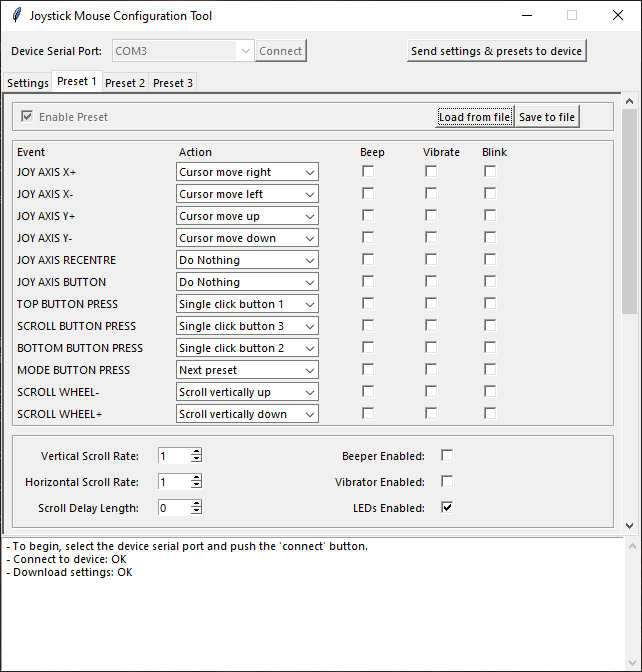
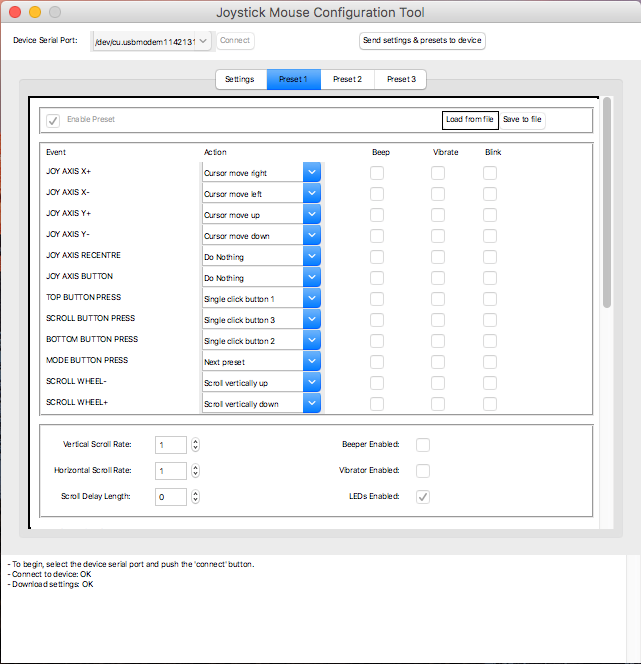
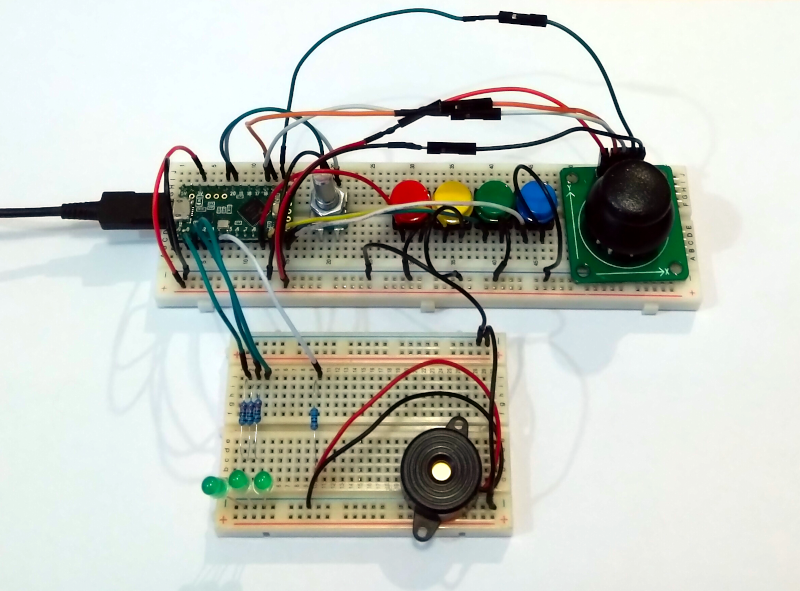

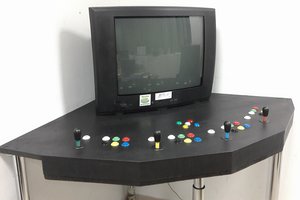
 SCART VADER
SCART VADER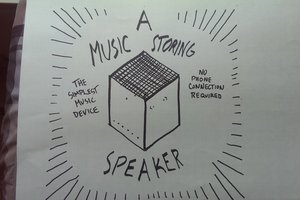

 Enderby
Enderby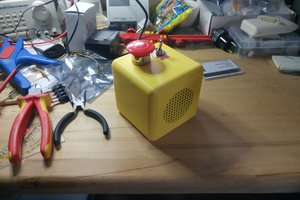
 treibair
treibair
Accessibility controllers were some of my favorite content from the period when Element 14 hosted The Ben Heck show. I'd love to see this working on a traditional console system (perhaps either a Microsoft or Nintendo would be the easiest to map this particular devices functionality?). Good luck!